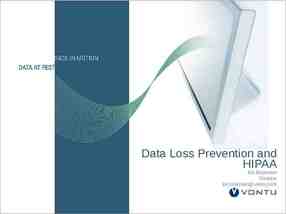Forward and Futures Contracts For 9.220, Term 1, 2002/03
29 Slides157.50 KB
Forward and Futures Contracts For 9.220, Term 1, 2002/03 02 Lecture21.ppt Student Version
Outline 1. 2. 3. 4. 5. 6. Introduction Description of forward and futures contracts. Margin Requirements and Margin Calls Hedging with derivatives Speculating with derivatives Summary and Conclusions 2
Introduction Like options, forward and futures contracts are derivative securities. Recall, a derivative security is a financial security that is a claim on another security or underlying asset. We will examine the specifics of forwards and futures and see how they differ from options. Derivatives can be used to speculate on price changes in attempts to gain profit or they can be used to hedge against price changes in attempts to reduce risk. In both cases, we will compare strategies using options versus using futures. 3
Forward and Futures Contracts Both forward and futures contracts lock in a price today for the purchase or sale of something in a future time period E.g., for the sale or purchase of commodities like gold, canola, oil, pork bellies, or for the sale or purchase of financial instruments such as currencies, stock indices, bonds. Futures contracts are standardized and traded on formal exchange; forwards are negotiated between individual parties. 4
Example of using a forward or futures contract COP Ltd., a canola-oil producer, goes long in a contract with a price specified as 395 per metric tonne for 20 metric tonnes to be delivered in September. The long position means COP has a contract to buy the canola. The payment of 395/tonne 20 tonnes will be made in September when the canola is delivered. 5
Futures and Forwards – Details Unlike option contracts, futures and forwards commit both parties to the contract to take a specified action The party who has a short position in the futures or forward contract has committed to sell the good at the specified price in the future. Having a long position means you are committed to buy the good at the specified price in the future. 6
More details on Forwards and Futures No money changes hands between the long and short parties at the initial time the contracts are made Only at the maturity of the forward or futures contract will the long party pay money to the short party and the short party will provide the good to the long party. 7
Institutional Factors of Futures Contracts Since futures contracts are traded on formal exchanges, margin requirements, marking to market, and margin calls are required; forward contracts do not have these requirements. The purpose of these requirements is to ensure neither party has an incentive to default on their contract. Thus futures contracts can safely be traded on the exchanges between parties that do not know each other. 8
The initial margin requirement Both the long and the short parties must deposit money in their brokerage accounts. Typically 10% of the total value of the contract Not a down payment, but instead a security deposit to ensure the contract will be honored 9
Initial Margin Requirement – Example Manohar has just taken a long position in a futures contract for 100 ounces of gold to be delivered in January. Magda has just taken a short position in the same contract. The futures price is 380 per ounce. The initial margin requirement is 10% What is Manohar’s initial margin requirement? What is Magda’s initial margin requirement? 10
Marking to market At the end of each trading day, all futures contracts are rewritten to the new closing futures price. I.e., the price on the contract is changed. Included in this process, cash is added or subtracted from the parties’ brokerage accounts so as to offset the change in the futures price. The combination of the rewritten contract and the cash addition or subtraction makes the investor indifferent to the marking to market and allows for standardized contracts for delivery at the same time to trade at the same price. 11
Marking to market example Consider Manohar (who is long) and Magda (who is short) in the contract for 100 ounces of gold. At the beginning of the day, the contract specified a price of 380 per ounce At the end of the day, the futures price has risen to 385 so the contracts are rewritten accordingly. What is the effect of marking to market for Manohar (long)? What would be the effect on Magda (short)? Who makes the marking to market payments or withdrawals from Manohar’s and Magda’s brokerage accounts? How does marking to market affect the net amount Manohar will pay and Magda will receive for the gold? What would have happened if the futures price had dropped by 10 instead of rising by 5 as described above? 12
Recap on Marking to Market After marking to market, the futures contract holders essentially have new futures contracts with new futures prices They are compensated or penalized for the change in contract terms by the marking to market deposits/withdrawals to their accounts. 13
Why have marking to market? To reduce the incentive to default Discussion: 14
The dreaded Margin Call In addition to the initial margin requirement, investors are required to have a maintenance margin requirement for their brokerage account typically half of the initial margin requirement % or 5% of the value of the futures contacts outstanding. Marking to market may result in the brokerage account balance rising or falling. If it falls below the maintenance margin requirement, then a margin call is triggered. The investor is required to bring the account balance back to the initial margin requirement percentage. 15
Margin Call Example Consider Manohar’s initial margin requirement, the futures price increased to 385 at the end of the first day and now the futures price decreased to 350. What are the cumulative effects of marking to market? If the maintenance margin requirement is 5% of 350/ounce x 100 ounces, what will be the margin call to bring the account back to 10% of 350/ounce x 100 ounces? What does the margin call mean? 16
Offsetting Positions Most investors do not hold their futures contracts until maturity Instead over 95% are effectively cancelled by taking an offsetting position to get out of the contract. E.g., Manohar (who was long for 100 ounces) can now enter into another contract to go short for 100 ounces The two contracts cancel out There is no more marking to market or margin calls Manohar may withdraw the remaining money in his brokerage account. 17
The Spot Price The price today for delivery today of a good is called the spot price. As a futures contract approaches the delivery date, the futures price approaches the spot price, otherwise an arbitrage opportunity exists. 18
Hedging with Futures For some business or personal reason, you either need to purchase or sell the underlying asset in the future. Go long or short in the futures contract and you effectively lock in the purchase or sale price today. The net of the marking to market and the changes in futures prices results in you paying or receiving the original futures price I.e., you have eliminated price risk. 19
Hedging Example: Farmer Brown Farmer Brown just planted her crop of canola and is concerned about the price she will receive when the crop is harvested in September. What is her main concern? How can she hedge with futures? How can she hedge with options? 20
Compare Hedging Strategies (assuming contracts on one metric tonne of canola) Derivative Used: Initial Cost Short Futures Contract @ 395 0 Long Put Option, E 395 - 15 Net amount received at harvest (final payoff net of initial cost) given final spot prices below: Spot 320 395 380 Spot 380 395 380 Spot 440 395 425 Spot 500 395 485 21
Hedging: Futures versus Options Net Amount Received Net Price Received for Canola using Different Hedging Strategies 500 475 450 425 400 375 350 325 0 100 200 300 400 500 Spot Canola Price at Harvest Time 22
Hedging – Self Study Work through COP’s hedging strategy (from slide 5) using futures or options. Assume the price of the relevant option with E 395 is 20. 23
Speculating with Futures Speculating involves going long (or short) in a futures contract when the underlying asset is NOT needed to be purchased (or sold) in the future time period. Enter into the contract, profit or lose due to futures price changes and marking to market, do an offsetting position to get out of the contract and take the money from the brokerage account. 24
Speculating Example Zhou has been doing research on the price of gold and thinks it is currently undervalued. If Zhou wants to speculate that the price will rise, what can he do? Give a strategy using futures contracts. Zhou can take a long position in gold futures; if the price rises as he expects, he will have money given to him through the marking to market process, he can then offset after he has made his expected profits. Give a strategy using options. Zhou can go long in gold call options. If gold prices rise, he can either sell his call option or exercise it. 25
Compare Speculating Strategies (assuming contracts on one troy ounce of gold) Derivative Used: Initial Cost Long Futures Contract @ 310 0 Long Put Option, E 310 - 12 Net amount received (final payoff net of initial cost) given final spot prices below: Spot 280 - 30 - 12 Spot 300 - 10 - 12 Spot 320 10 - 2 Spot 340 30 18 Spot 360 50 38 26
Speculating: Futures vs. Options 400 375 350 325 300 275 250 225 100 75 50 25 0 - 25 - 50 - 75 - 100 - 125 200 Profit from Speculating Net Profit Received from Speculating in Gold Final Spot Price of Gold 27
Should hedging or speculating be done? Speculating: If the market is informationally efficient, then the NPV from speculating should be 0. Hedging: Remember, expected return is related to risk. If risk is hedged away, then expected return will drop. Investors won’t pay extra for a hedged firm just because some risk is eliminated (investors can easily diversify risk on their own). However, if the corporate hedging reduces costs that investors cannot reduce through personal diversification, then hedging may add value for the shareholders. E.g., if the expected costs of financial distress are reduced due to hedging, there should be more corporate value left for shareholders. 28
Summary and Conclusions Forward and Futures contracts can be used to essentially lock in the final purchase or sale price of an asset. Forward contracts are between individual parties and thus rely on the integrity of each. Futures contracts are through organized exchanges and include margin requirements and marking to market – thus making the risk of default minimal. Forwards and futures are derivatives that can be used to speculate or to hedge. There is less cost to get into a forward or futures contract compared to getting into a long option position; however, because the forward and futures contracts represent commitments, larger losses may occur from these contracts than the losses from a long option contract. 29


































